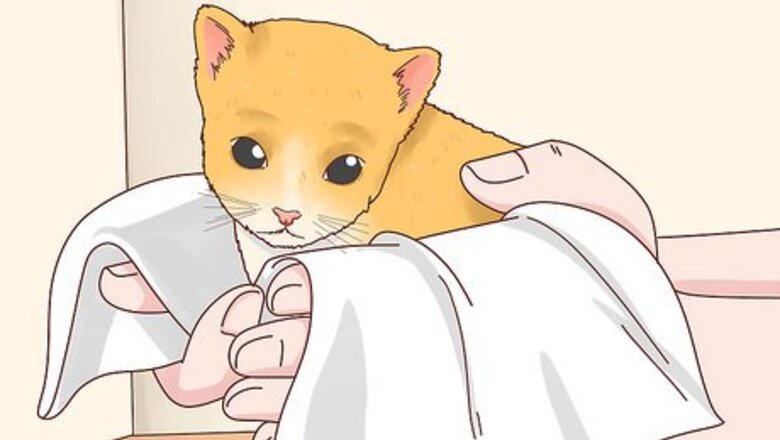
views
Judging Genital Features

Make sure the kitten is in a warm, safe environment. Though it may not be obvious, young kittens are very vulnerable to the cold. Until they're able to warm themselves on their own, they rely on the mother's body heat for warmth. Separating a kitten from its mother can damage its health. To avoid adversely affecting the kitten or its health, follow these guidelines when handling the kitten and trying to determine its sex: Handle the kittens in a warm, indoor area Don't separate young kittens from their mother for more than 5-10 minutes Don't lay kittens on "heat-sucking" surfaces like marble countertops and hardwood floors that will draw warmth out of their bodies
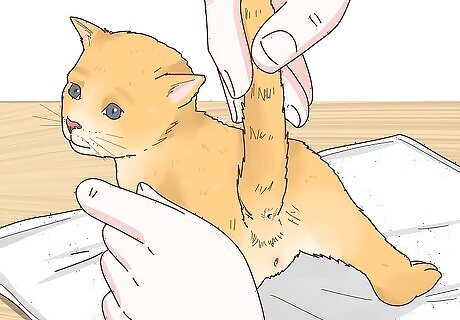
Gently lift the kitten's tail. Checking the kitten's genitals is the most direct way to determine its sex. A kitten may be (understandably) reluctant to let you lift its tail and expose its genitals. Always be gentle. Handling a kitten roughly or using forceful motions can cause pain and may cause the kitten to lash out in self-defense. Avoid holding the kitten by its tail, which is very fragile. Calmly pet the kitten for a few minutes before laying it gently on a soft, clean towel and lifting its tail. Be willing to back off and return it to its mother if it shows resistance. Position the kitten in a standing position with its head directed away from you. Lift--don't tug or pull--the tail. If the kitten is reluctant to let you inspect beneath its tail, try getting a partner to help. The partner can gently hold the kitten in their arms while you gently lift the tail. You can also try to get the kitten to voluntarily lift its tail by scratching where the back meets the tail. The kitten should have two openings. The top opening is the anus, while the bottom opening is the male or female genitalia.
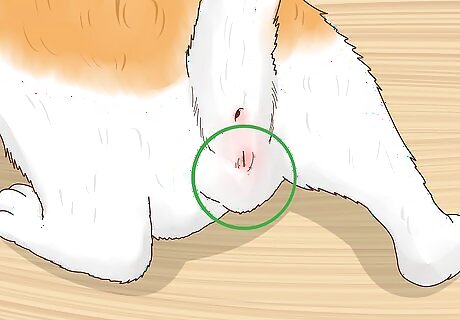
Check the shape of the lower opening. If you have more than one kitten, you might compare the two side-by-side. It can be easier to distinguish males from females by comparing them directly. A female kitten's genital opening will look like a small vertical slit. Together, the anus and genital openings on a female kitten will look like a lowercase “i.” A male kitten's genital opening will look like a tiny circular hole. Together, the anus and genital openings on a male kitten will look like a colon ( : ).
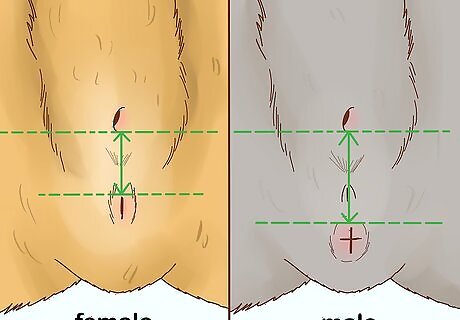
Check the distance between the openings. Female kittens have a lesser anogenital distance than do males, so you can use the distance to distinguish the sexes. A female kitten's genital opening is placed higher up and closer to the anus. A male kitten's genital opening is further below the anus.
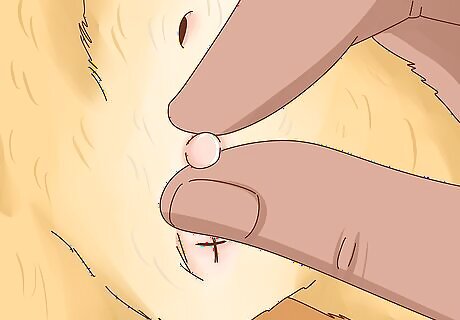
Check for testicles. Testicles on young males are not always obvious but can still be detected. But don't ever forcibly manipulate the genitals. Penises can be especially delicate — attempting to forcefully extend a male cat's penis (which is normally withdrawn) can lead to lasting damage. Look carefully at the space between the genital opening and the anus. If you see a small bulge or pouch, it's likely the scrotum, and thus the kitten is male. If you can't visually detect a scrotum, you can feel for them in kittens that are at least a month or two old. To feel for testicles, gently pinch the area between the anus and genital opening. You may feel one or two small pea-sized lumps. Be aware that very young male kittens--younger than a month or two old--may have testicles that have retreated into the inguinal canal and cannot yet be felt.
Judging Non-Genital Features

Look for sex-specific coat colors. The color of a kitten's fur can give clues to its sex. Certain colors, like calico (large patches of black, white, and orange) and tortoiseshell (marbled black, orange/brown, and sometimes white), are carried on the X chromosome and require two X chromosomes to appear. Thus, because females have two X chromosomes while male cats have only one, males cannot have these colors except in the case of a rare genetic disorder. Orange tabby (striped) cats are more likely to be male.
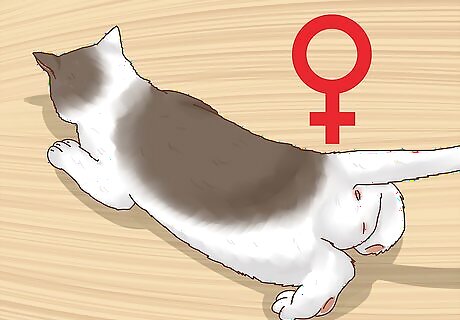
Look for signs of a heat cycle (estrus). After about 6-10 months (and for some breeds as early as 4), most unspayed female kittens will begin to show signs of being “in heat” (scientifically referred to as being “in estrus”). A female cat may be in heat for between 2-19 days. The average cycle for a female cat that does not mate is about 8 days, but the cycle is often shorter for cats that do mate, as mating induces ovulation. A cat in heat will display certain telling behaviors, which, if they occur, may indicate the cat is female. These include: Beginning to meow more loudly, harshly, and frequently. It will grow in intensity over time and may begin to sound like howling. Showing a strong urge to go outdoors Becoming extremely affectionate, even with inanimate objects Showing “presenting” behavior, wherein a female cat rests on its front legs while hyper-extending the back and lifting its tail and rear end in the air. Spraying urine
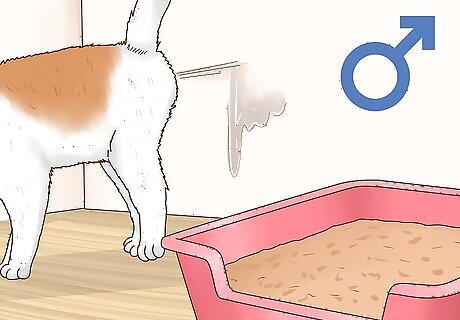
Check for strong-smelling urine. When an unneutered male (tom) cat becomes sexually mature, he'll often develop a habit of spraying strong-smelling urine. A male cat may begin to spray outside the litter box, even if he's normally well-trained. The urine will have a strong, unmistakable smell that most find unpleasant.
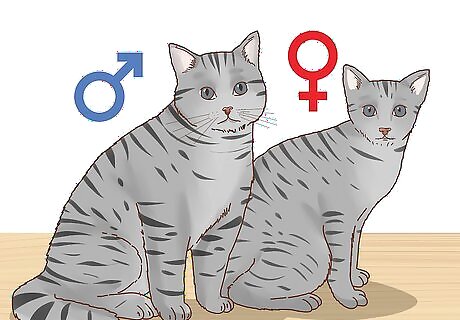
Evaluate the kitten's build and facial features. You likely won't be able to distinguish noticeable differences in physical features until a cat is sexually mature. Once the cat is mature enough, though, there are particular features you can look for. An unneutered male will tend to be lean and muscular, with thicker bones in the skull and jaw. Unneutered males also commonly have what's called a “stud tail.” A set of glands at the base of the tail secretes an excessive amount of an oily substance called sebum. This secretion can have telling effects on the area near the base of the tail, including greasy or matted hair; absent, thin, or patchy hair; blackheads; a rash or skin infection; and/or a foul smell.




















Comments
0 comment